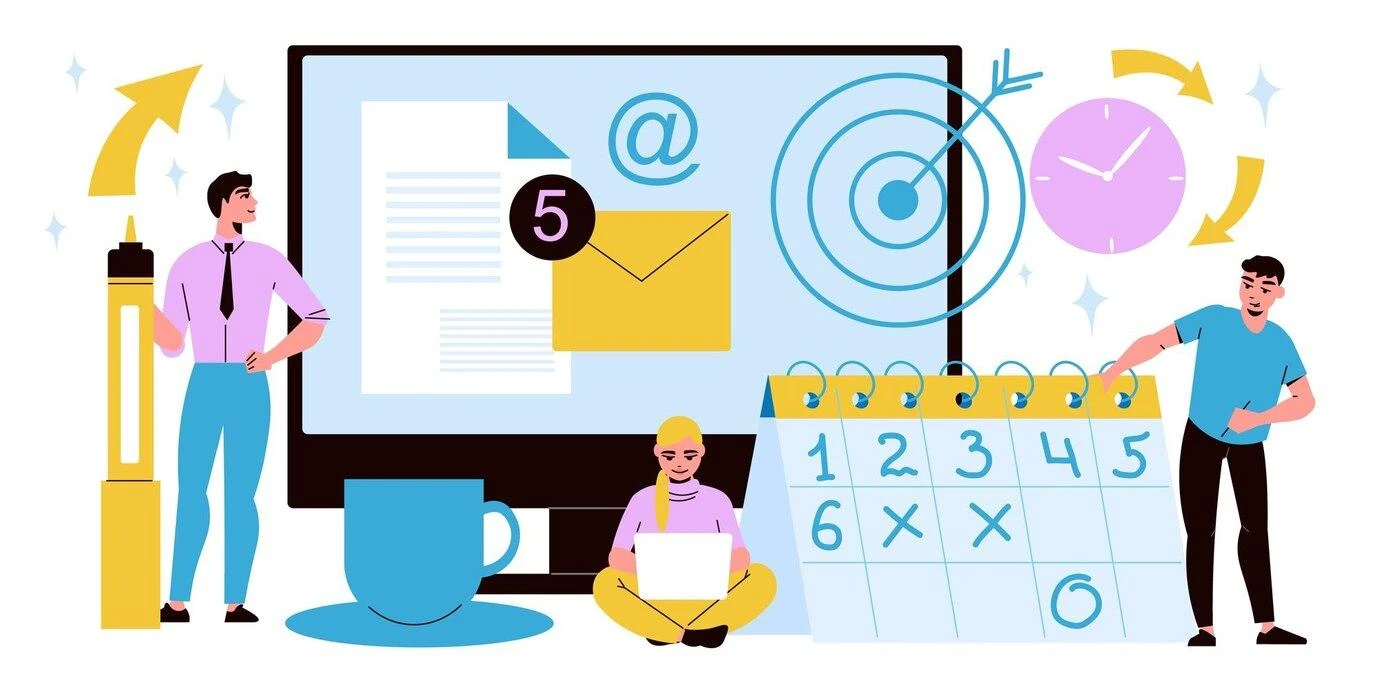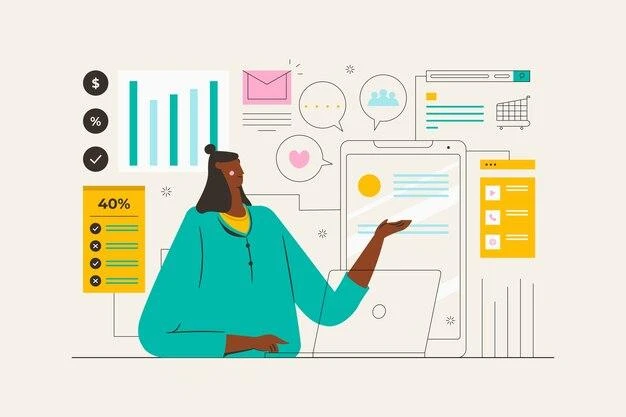Today, inbound marketing has become the backbone of successful B2B organizations. Despite its simple concept, each organization has its unique iteration of the “inbound strategy”, and thus, the success rates differ for each of them. Pulling customers in through helpful, information-rich interactions customized to needs rather than interrupting audiences is at the core of each inbound strategy, but the one channel that remains consistently underutilized is email. This is rather surprising given that over 4 billion people access email daily.
As per statistics, email marketing offers the highest return on investment compared to other digital marketing channels - $40 for every $1 spent. However, the benefits of integrating email into your inbound strategy extend far beyond numbers. And this is why you must ensure that whenever you hire HTML email developer or a marketing automation developer, they must work closely with your marketing strategists/leads, even when outsourcing work.
Let's explore how B2B marketers can make the most out of what email marketing has to offer, especially from an inbound point of view:
Understanding the Essence of B2B Email Marketing and Inbound Strategy
Before we dive deeper into how email marketing supercharges inbound results, let’s clearly understand what these concepts intrinsically mean:
B2B Email Marketing: The Key to Scaled Business Conversations
Email enables helpful, trust-building conversations between businesses and potential customers. B2B email outreach focuses on starting relationships with the right decision-makers via personalized communication tailored to their contexts. So whether it is targeting IT managers with insights on reducing security risks, operations heads with supply chain efficacy improvements, or financial controllers with optimizing spend, the goal is to provide value addressing their priorities.

(Source)
The permission-based nature of email combined with analytics for granular personalization allows these customized conversations to scale to thousands of prospects segregated based on attributes. Over time, relationships strengthen, building credibility for the brand as a partner rather than a vendor. Consent helps overcome intrusiveness and customization powered by data fosters connections.
Inbound Strategy: Pulling Customers In with Value
Inbound methodology embraces attracting potential customers by solving problems important to them through helpful educational content. Instead of interrupting audiences with broadcast-style promotions, it focuses on anticipating needs prospects care about and addressing them proactively. This requires understanding pain points through research for target segments.
Based on these insights, brands create ebooks, guides, blogs, videos, and other formats that deliver value around key challenges. Optimizing this content for findability via search and sharing also pulls in visitors organically from outside company properties. The end goal is establishing thought leadership, positioning the brand as a trusted advisor for customers instead of just another vendor pitching wares.
Dialogue Continuity Delivering Lifecycle Value
Driving customer-centricity requires an always-on, trusted medium allowing proactive value delivery across the entire buyer lifecycle spanning multiple years. One-way channels like SEO/SEM or ads cannot fulfill this requirement, while social lacks depth and consistency due to algorithm barriers.
In such cases, multilayered email workflows help sustain dialogue, delivering relevance across the customer lifecycle. Personalized product update emails prevent stagnant usage, while proactive account review sequences help adoption. Loyalty promotions improve retention metrics and lower churn/disengagement, providing escapability between purchases.
Transactional notifications related to key events - renewals/plan changes/new capability launches/scheduled maintenance ensure customers have complete visibility, minimizing business disruption. Critical milestone wishes, customer success stories, and advocacy material make audiences feel more vested, boosting satisfaction.
This structured, automated, and contextual engagement powered by email provides lifecycle continuity that is indispensable for customer-centric B2B brands aiming to drive expansion business from existing accounts. It cements email's stature as the always-on trusted advisor.
Leveraging Personalization for Targeted Engagement
Email allows you to slice and dice your audience into highly targeted segments based on their demographics, firmographics, intent signals, and past behaviors. You can then deliver hyper-relevant messaging tailored to the unique needs and interests of each group.
For instance, product capability emails may resonate more with technical decision-makers, whereas, business case studies prove more effective for CXO roles involved in final vendor selection. Emails help achieve this through nested, multi-step automation.
Similarly, for a marketing agency, messaging focused on a specific job role’s pain points or company attributes will connect better compared to generic broadcasts. The relevance also remains high because email is an always-on channel with no algorithmic barriers limiting organic reach.
Automation: Streamlining Workflows and Nurturing Leads
One unique advantage of permission-based email marketing lies in its ability to not only segment audiences narrowly but also map specific groups to differentiate ongoing workflows based on distinct user needs.
Marketing qualified leads with a very limited understanding of solution capabilities require basic educational nurturing on product overviews and core benefit areas to boost awareness. Commercially qualified prospects already aligned to purchase needs, on the other hand, will benefit more from use case guidelines, peer advocacy, and capability showcases as they evaluate options.
Decision stage contacts need to receive product-led sales material focused on trials, demos, and ROI analysis to tip purchase scales. Post-sales communication again moves towards onboarding, adoption, and upselling/cross-selling based on new requirements.
Tailored email workflows can be purpose-built to address the distinct priorities of different buyer personas across various stages of the buying journey. This level of personalization and context makes it possible to deliver targeted value to each lead or customer. By maintaining an ongoing, relevant dialogue tailored to where each prospect is in their journey, brands can drive faster conversions while making the buyers feel that they are in control of the whole process.
The flexibility to continuously evolve conversations based on relationship maturity is exclusive to permission-based mediums like email.
Segmentation
Inbound is all about attracting potential customers by solving their problems through helpful content that speaks to their unique needs. Email allows you to identify these needs for audience micro-segments and deliver hyper-targeted communications at a staggering scale.
Whether it is CIOs interested in security insights, SQL developers looking to optimize queries, or HR managers wanting to retain talent, their contexts, pain points, and preferred formats differ. Email coupled with analytics makes it possible to map content to personas in a 1:1 fashion.
This match of relevance to scale is the holy grail that accelerates growth. It ensures tens of thousands of prospects receive communication in lockstep with their buyer journeys instead of mass blasts. Over time, it cuts through the noise to connect with individuals rather than identities lost in a crowd.
The success of an inbound strategy lies in guiding customers along need-based, contextual journeys personalized to their interests rather than isolated interactions. This is where the science of multi-layered email sequencing powered by data and automation provides unmatched momentum.
Welcome sequences invite users to explore solutions to known needs. Specialized nurturing tracks address segment-specific requirements with curated content blocks. Decision stage acceleration focuses on overcoming final barriers through capability showcases, peer validations, and free trials. Post-purchase journeys drive adoption, cross-sells, and renewals.
This structured approach compounds the impact of individual communications into an overall influence far greater than the sum of parts. When aligned tightly to the inbound goals, it provides unparalleled conversion-centricity that is invaluable for growth.
Hence, email integration in an inbound strategy introduces the relevance, scale, measurability, and continuity needed for inbound strategies to extract their full potential.
Measuring Success
Email tools offer various metrics quantifying audience engagement and campaign performance. But marketers must interpret these insights correctly within inbound strategy contexts to drive optimization:
Open Rates & Role For Strategy
High open rates signify email content resonating with subscriber needs. This strengthens the trust and credibility of the sender as an advisor. Results directly fuel awareness and consideration goals for inbound. Low open rates require messaging improvements to align with audience expectations.
CTR & Implications For Funnel Progression
High click-through rates on embedded email links/CTAs confirm the appeal of specific offerings versus others. This redirects creation efforts towards resonating solutions. Low CTRs mean more nurturing is needed around certain assets or ineffective positioning, hampering advancement across buying journey stages that rely on clear calls-to-action.

(Source)
Conversion Metrics & Impact On Inbound Goals
For inbound strategies, email conversion metrics must tie back to funnel stage priorities before interpreting performance. Newsletter signup rates reveal awareness generation capability. Gated content download conversion rates quantify education efficacy for the consideration stage. Email CTRs on free trial promotions validate email’s role in assisting decision stage progression.
Unsubscribe Rates & Relationship Implications
Rising unsubscribes often signify reducing trust stemming from irrelevant content or send frequency conflicting with preferences. This directly damages the inbound core tenet of nurturing relationships via helpfulness. Loss in subscribers also shrinks addressable audience size, shrinking awareness potential. Both factors require significant fixes to re-earn audience faith and fuel strategy.
Integration with Other Inbound Channels
Customers today demand integrated, connected experiences across channels, sessions, and devices. Meeting this expectation requires a future-ready omnichannel approach leveraging intent signals, universal profiling, and AI recommendations to drive relevant conversations regardless of touchpoint.
This is an area where email platforms have built significant omni-channel capabilities over the years pestered by rising channel fragmentation. Unified customer profiles across devices, integration with site/app behaviors, and predictive intelligence at scale have evolved email into a central nervous system powering cross-channel experiences.
With identity resolution, customers can be identified and engaged across any digital property without reliance on unstable third-party cookies/tags. Email intelligence will orchestrate journey continuity across organic, paid, and owned channels while respecting user privacy far better than any alternative.
Inbound Best Practices For B2B Email Marketing
Email offers unmatched reach combined with complete control over the entire channel experience- from subscriber onboarding, communication frequency, and message formatting to compliance with privacy regulations. This prevents any third-party gatekeeping or visibility barriers.
In turn, confidence in consistent visibility and direct access to audiences without algorithmic interference or platform policy changes establishes sender credibility.
This reliability in outreach and dialogue drives higher customer confidence in email senders. Combine reliability with customization at scale based on real-time behaviors, and email emerges as the trusted concierge driving inbound success. But, ir order to reap these benefits, you must follow the below best practices:
- Segment your audience into groups with common needs and priorities. Create customized email nurturing tracks aligned to each segment's distinct buying stage and interests. Guide different personas along unique yet coordinated journeys.
- Personalize content formats, offers, and messaging to resonate with specific roles. Showcase relevant use cases through appropriate formats preferred by each audience group – technical buyers may prefer product updates, while business executives value customer success stories more.
- Choose performance metrics that tie back to inbound funnel goals, not just vanity metrics. Analyze open and click-through rates to gauge content appeal. But focus conversion metrics on tracking awareness, consideration, and decision-stage progression. Let data guide optimization.
- Utilize email intelligence to deliver integrated, omnichannel customer experiences. Identify audiences across devices to maintain messaging consistency across channels and journey stages. A coordinated cross-channel approach accelerates conversions.
- Email affords unmatched control over engaging subscriber relationships, unlike social platforms. Maintain reliable and relevant conversations catered to user expectations. Building trust and credibility this way fuels sustainable inbound growth.
Wrap Up
Stepping back, it’s clear email marketing represents the key enabling infrastructure allowing B2B brands to implement the ideals of inbound methodology at scale. The relevance, continuity, and intelligence needed for sustainable customer-centricity would otherwise remain conceptual aspirations rather than executable strategies without email connectivity.
In a way, email workflows structurally embed the inbound philosophy into the DNA of B2B communication in the always-on digital world. They enable brands to lead continuous helpful conversations optimized to individual recipient needs rather than one-way, static broadcasts. Diverse micro-segments can each traverse their unique buyer journeys at their own pace.
This infrastructure for relationship-building recasts email from a supplemental component to the foundational medium upholding modern B2B marketing. The technology fades into the background, enabling human-centric connections.

No comments yet